DocMagic and BeSmartee Integrate, Creating a Fast, Fully Digital Application Process for Borrowers
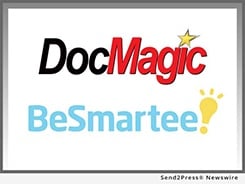 Integration reduces time from initiating a loan application to receiving disclosures from days or weeks to just minutes
Integration reduces time from initiating a loan application to receiving disclosures from days or weeks to just minutes
TORRANCE, Calif., May 9, 2017 (SEND2PRESS NEWSWIRE) — DocMagic, Inc., the mortgage industry’s leading provider of document production, automated compliance and comprehensive eMortgage services, announced that it completed an integration with BeSmartee, a leader in mortgage automation technology.
This integration creates a seamless connection between the two technologies, which fulfill the first two major events in the eMortgage process: online borrower application and electronic delivery of disclosures. Via this integration, DocMagic and BeSmartee are enabling borrowers to complete a loan application and receive disclosures in a matter of minutes, rather than the days or weeks that is typical with manual processes. Once the application is complete, disclosures are automatically created and presented to the borrower for electronic signature, with no additional effort by the lender.
“eMortgages offer better speeds, security, quality and accuracy, which translate to a better borrower experience and more efficient, economical operations for the lender,” said Dominic Iannitti, president and CEO of DocMagic. “This integration further escalates those benefits by allowing two great technologies to operate at their peak collaborative performance.”
BeSmartee connects borrowers and lenders directly with providers that instantly validates the borrower’s income, asset and credit information, such as the IRS, financial institutions, and credit bureaus. The technology’s auto-population feature helps borrowers complete the application in a fraction of the time, while its validation feature provides lenders with vetted information for a faster underwriting process.
DocMagic technology saves time by generating a fully-compliant electronic disclosure package based on the borrower’s information in a matter of minutes, rather than the days it takes with even the fastest manual processes. That package is then instantly presented to the borrower, who can review and execute the documents on-screen, once again reducing a traditionally days-long process to minutes.
“A true eMortgage uses no paper at all. It’s a start-to-finish electronic process that requires collaboration among certain technology providers,” said Iannitti. “DocMagic is proud to be the solution that connects not only those technologies, but also all of the entities that use them, to enable a truly electronic process. It’s great to partner with progressive companies like BeSmartee who are helping to make eMortgages possible.”
“The BeSmartee/DocMagic integration avails a level of speed that the industry hasn’t experienced before but that, as more lenders discover its impact on sales and operations, more borrowers will come to expect,” states Tim Nguyen, co-founder and CEO of BeSmartee. “Together, we’re delivering the type of speed and service that Millennials have come to expect, which is key to securing new business from this coveted group of borrowers.”

 Press Release:
Press Release: One of the nation’s largest lenders completes its first eClosing as an eWarehouse lender, using DocMagic’s Total eClose™ solution for eWarehouse lending
One of the nation’s largest lenders completes its first eClosing as an eWarehouse lender, using DocMagic’s Total eClose™ solution for eWarehouse lending North Carolina Secretary of State Elaine Marshall wants the state to be a leader in eCommerce. It adopted the Uniform Electronic Transactions Act, the Uniform Real Property Electronic Recording Act and the Electronic Notarizations Act. All of this was to prepare for the day when the state could institute eClosings.
North Carolina Secretary of State Elaine Marshall wants the state to be a leader in eCommerce. It adopted the Uniform Electronic Transactions Act, the Uniform Real Property Electronic Recording Act and the Electronic Notarizations Act. All of this was to prepare for the day when the state could institute eClosings.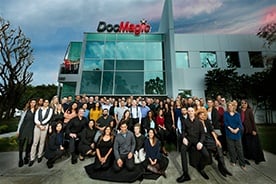 TORRANCE, Calif., April 5, 2017— DocMagic, Inc., the premier provider of fully-compliant loan document preparation, regulatory compliance and comprehensive eMortgage services, reported a 42 percent increase in revenue for 2016. The company credits its growth to the mortgage industry’s demand for products that enable TRID compliance, eSignatures and eClosings. This is the second consecutive year that DocMagic’s revenue has increased by roughly 40 percent.
TORRANCE, Calif., April 5, 2017— DocMagic, Inc., the premier provider of fully-compliant loan document preparation, regulatory compliance and comprehensive eMortgage services, reported a 42 percent increase in revenue for 2016. The company credits its growth to the mortgage industry’s demand for products that enable TRID compliance, eSignatures and eClosings. This is the second consecutive year that DocMagic’s revenue has increased by roughly 40 percent.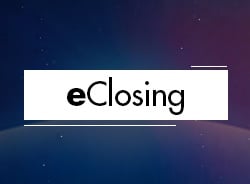 PROGRESS in Lending Association has named the work done by DocMagic a top innovation. As the mortgage industry slowly embraces the Digital Mortgage, DocMagic launched what was dubbed its “Total eClosing solution,” which enables a comprehensive, true 100% paperless eClosing that automates the entire process — from start to finish. Looking back, DocMagic was brought to the forefront of eClosing technology awareness with its participation in the CFPB’s eClosing pilot in 2014. This vendor was 1 of only 12 firms that was invited by the CFPB to participate. If the industry is going to go digital it will need vendors like DocMagic to lead the way. The Total eClose solution includes the seamless incorporation of its eSignature-enabled SMART Documents, a nationwide eNotary network, MERS eRegistry access, eWarehousing, eNotes, a secure eVault, and secure investor eDelivery — all in a single, comprehensive eClosing platform and completely TRID-compliant. There is absolutely no paper involved at any point, at any time.
PROGRESS in Lending Association has named the work done by DocMagic a top innovation. As the mortgage industry slowly embraces the Digital Mortgage, DocMagic launched what was dubbed its “Total eClosing solution,” which enables a comprehensive, true 100% paperless eClosing that automates the entire process — from start to finish. Looking back, DocMagic was brought to the forefront of eClosing technology awareness with its participation in the CFPB’s eClosing pilot in 2014. This vendor was 1 of only 12 firms that was invited by the CFPB to participate. If the industry is going to go digital it will need vendors like DocMagic to lead the way. The Total eClose solution includes the seamless incorporation of its eSignature-enabled SMART Documents, a nationwide eNotary network, MERS eRegistry access, eWarehousing, eNotes, a secure eVault, and secure investor eDelivery — all in a single, comprehensive eClosing platform and completely TRID-compliant. There is absolutely no paper involved at any point, at any time.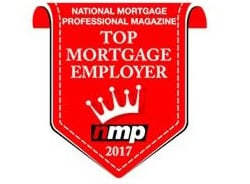 TORRANCE, Calif., March 16, 2017—DocMagic, Inc., the premier provider of fully-compliant loan document preparation, regulatory compliance and comprehensive eMortgage services, announced that it was named to National Mortgage Professional (NMP) magazine’s annual ‘Top 100 Mortgage Employers’ list for 2017. This is the second consecutive year that DocMagic has earned placement on the annual list.
TORRANCE, Calif., March 16, 2017—DocMagic, Inc., the premier provider of fully-compliant loan document preparation, regulatory compliance and comprehensive eMortgage services, announced that it was named to National Mortgage Professional (NMP) magazine’s annual ‘Top 100 Mortgage Employers’ list for 2017. This is the second consecutive year that DocMagic has earned placement on the annual list.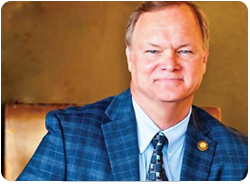 By Tim Anderson
By Tim Anderson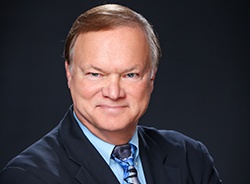 By Tim Anderson
By Tim Anderson By Brian A. Lee
By Brian A. Lee